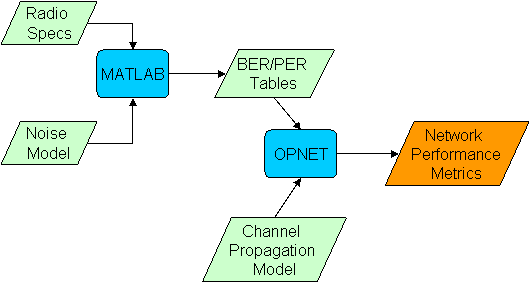Mine Mesh Networks Modeling & SimulationObjective:To develop network modeling and simulation tools for underground mine mesh networks that can be used to analyze normal as well as post-incident communications between underground miners and the surface. Overview:Working with the National Institute for Occupational Safety and Health (NIOSH), NIST is developing simulation tools to evaluate the performance of mesh network communication systems proposed for implementation in underground mines. A mesh network is comprised of interconnected nodes with one or more multihop communication paths between any two nodes in the network. The simulation tools under development will be used to analyze the capabilities of mesh networks under normal as well as post-incident conditions which may arise from an explosion, roof collapse, or other emergency situations. Mesh Network Technologies:Mesh network technologies under consideration for implementation in underground mines utilize medium frequency (MF) and ultra high frequency (UHF) propagation between nodes in the network.
Applications of interest for digital mesh networks include multicast voice, text messages, and location tracking information. Modeling Approach:A block diagram of the modeling approach is shown below. Using the specifications of the radio under consideration as well as statistics of the noise and interference in a mine, we have developed a physical-layer (PHY) simulation tool in MATLAB with which we generate bit error rate (BER) and packet error rate (PER) tables off-line. Noise models include those for electromagnetic interference for normal operations when mine machinery is on as well as additive white Gaussian noise for post-incident conditions when mine machinery is off.
The BER and PER tables generated off-line by the PHY simulation tool are used by an OPNET-based tool to model link errors. These tables are indexed by the received signal-to-noise ratio, which is computed using the large-scale channel propagation model. The outputs of the OPNET simulation tool are network performance metrics such as end-to-end throughput, delay, and packet loss for a given mesh network configuration and mine map. Project Progress:
|
Start Date:March 17, 2008 End Date:ongoing Lead Organizational Unit:ITL Source of Extramural Funding:National Institute for Occupational Safety and Health (NIOSH) Related Programs and Projects:Contact
General Information: 100 Bureau Drive, M/S 8920 |

